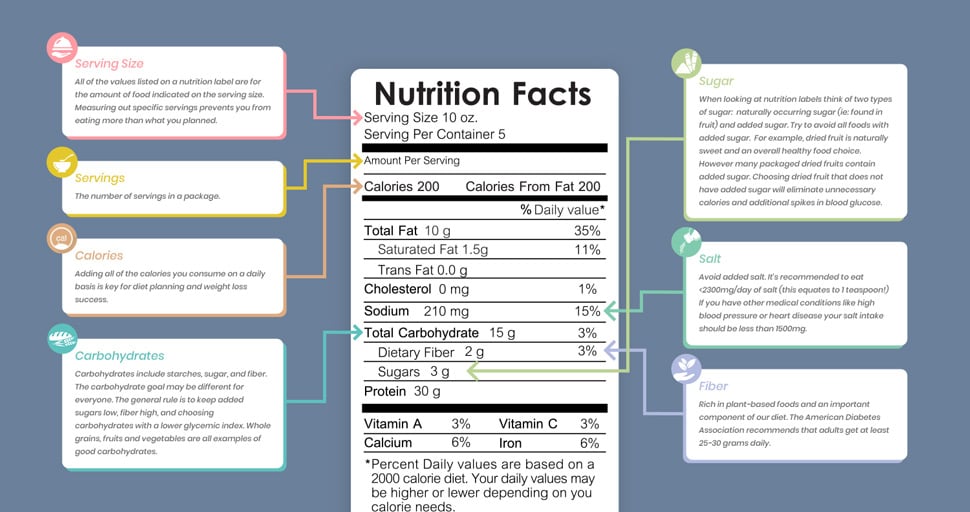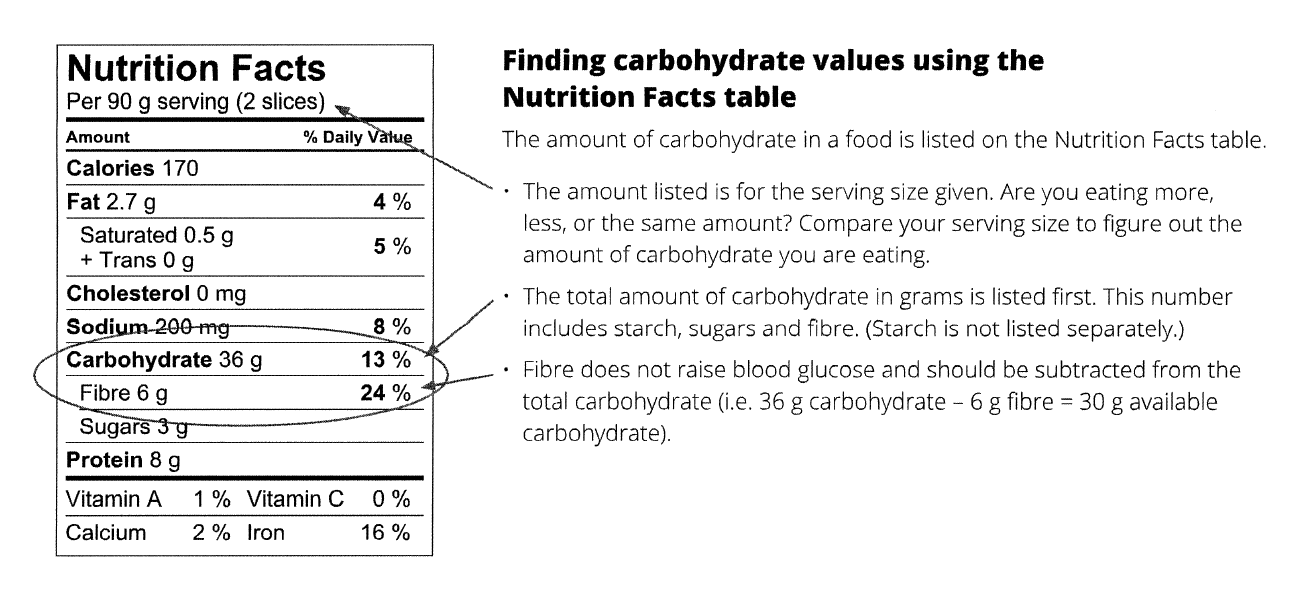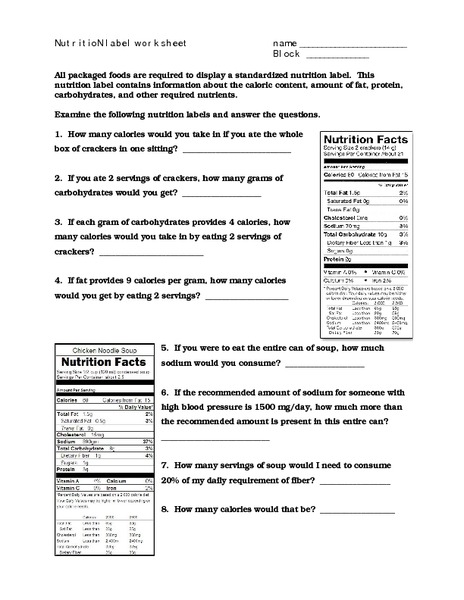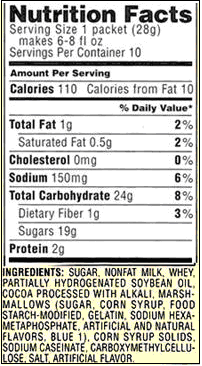45 reading nutrition labels carbohydrates
Decoding Diabetes: How to Read Nutrition Labels | Accu-Chek The calories in the foods you eat are made up of fat, protein, and carbohydrates. Nutrition labels are typically made based on the assumption that you have a daily diet of 2,000 calories (kilocalories). Some labels will have a footnote that expand on this concept, providing numbers for both 2,000 and 2,500-calorie (kilocalorie) diets. Nutrients. How to Read Food Labels | Your Low Carb Hub The below label shows there are 4.3g of carbs in a 15ml serving size which is equivalent to one tablespoon. 3.4g of this is sugar. There is 22.7g of sugar in 100ml, that's 5.6 teaspoons of sugar. The World Health Organisation (WHO) recommends no more than 5-10 teaspoons of added sugar in an entire day.
How to Read Food Labels & Count Carbs | Allulose For individuals counting carbohydrates, an easy way to calculate the grams of carbohydrate is to subtract the amount of allulose (grams) contained in the product from the Total Carbohydrates listed in the Nutrition Facts. Nutrition Facts Label. Since 1994, the familiar "Nutrition Facts" label has appeared on food and beverages to allow ...

Reading nutrition labels carbohydrates
Reading Food Labels, The Most Basic Tool in Diabetes Management Do not focus only on the amount of glucose when reading food labels: You should pay attention to the total amount of carbohydrates, which in addition to glucose will also include complex carbohydrates and fiber. Don't forget high-fiber foods: Look for foods that contain at least 3 grams of fiber. Sugar-free does not mean no carbohydrates ... How To Read Food and Beverage Labels - National Institute on Aging These foods have a legal limit to how many calories, grams of fat, or carbohydrates (carbs) they can contain per serving. However, if a serving size is very small, you may end up eating multiple servings in one sitting, ultimately consuming the same amount of fat, calories, and carbs as the regular version of the food. Multigrain. Making Sense of Food Labels | ADA
Reading nutrition labels carbohydrates. Is it Keto? How To Read Food Labels - 3 Easy Steps Step 2 - How to read food labels - Check Out Carbohydrates. Total carbs (highlighted in blue): this shows how many grams of carbs in every form (sugars, fiber and starches) is found in the food item. It includes those sugars, starches and fiber that are naturally occurring in the food item as well as those that have been added in. Reading Food Labels | ADA - American Diabetes Association The Nutrition Facts labels on foods are really the key to making the best choices. We'll cover the basics so that these labels make shopping easier for you. Get started Understanding Carbs You've heard it all. From carb-free to low-carb, to whole and empty carbs, it's hard to know what it all means. Learn more Food & Blood Sugar Interactive Nutrition Facts Label - Food and Drug Administration Nutrition Facts 4 servings per container Serving size 1 1/2 cup (208g) Amount Per Serving 240 Calories % Daily Value* 5% Total Fat 4g 8% Saturated Fat 1.5g Trans Fat 0g 2% Cholesterol 5mg 19%... PDF How do I read food labels? - American Heart Association Nutrition Facts label and ingredient list. When you go grocery shopping, take time to read the Nutrition Facts labels on the foods you purchase. Compare the nutrients and calories in one food to those in another. The information may surprise you. Make sure you aren't buying foods high in calories, saturated fat, trans fat, sodium and added ...
Learning To Read Labels :: Diabetes Education Online On a nutrition food label, subtract the fiber from the total carbohydrate amount. When you read food labels, the grams of sugar are already included in the total carbohydrate amount, so you do not need to count this sugar amount separately. The grams of sugar listed include both natural sugars, from fruit or milk, and added sugars. Reading food labels: Tips if you have diabetes - Mayo Clinic Less than 5 grams of carbohydrates a serving Do the math Pay attention to serving sizes. The serving sizes listed on food labels may be different from the serving sizes in your meal plan. If you eat twice the serving size listed on the label, you also double the calories, fat, carbohydrates, protein, sodium and other ingredients. Reading Food Labels for Carbohydrates Article - dummies Reading food labels is a vital skill for anyone who counts carbohydrates. To find the amount of carbohydrates in your foods, follow these steps: Look for the line that reads "Total Carbohydrate" on the label. The value on this line will tell you how many grams of carbohydrates are in one serving of the food. Reading labels | Diabetes UK Always look at the 'total carbohydrate' on the label when carb counting. This will make sure you are counting both the complex (starchy) and simple (sugary) carbs in your food. Both will raise your blood glucose (blood sugar) levels, and need to be matched with insulin.
How to Understand and Use the Nutrition Facts Label | FDA Dietary fiber, vitamin D, calcium, iron ad potassium are nutrients on the label that Americans generally do not get the recommended amount of. They are identified as nutrients to get more of.... LABEL READING: CARBOHYDRATES AND SUGARS - Renaissance Nutrition Center ... If there were sugar names in the ingredient list, then be very suspicious of what is on the label. The label may list as many as six items: Total Carbohydrate Dietary Fiber Soluble fiber Sugars Sugar alcohols Other Carbohydrates Some manufacturers voluntarily include the subcategories of sugar alcohol and "other carbohydrates." Others do not. How To Read Nutrition Labels (Like a Pro) - Ditch The Carbs Carbohydrates will be on the nutrition label are often broken down into carbohydrates, sugars, starch, and fiber. However, each brand may display its nutritional contents differently. And depending on which country you are in they will either show NET or TOTAL carbs and sometimes it isn't clear which they are referring to. This Is How to Read a Nutrition Facts Label on the Keto Diet Depending on the daily carb intake you've determined for yourself to stay in ketosis, this is a quick way to determine whether you have room in your daily eating plan for a particular food. (Remember, a ketogenic diet is typically a ratio of about 70-75% fat, 15-25%+ protein, and 5% or less of calories from carbs.)
How to Use the Nutrition Facts Label — Diet Doctor 3. Calculate net carbs per serving. Third, check the grams of dietary fiber per serving (circled in green, above). Subtract the fiber (green) from the total carbohydrates (blue) to get the net carbs. This chocolate has 9 grams of net carbs per serving (14g carbs - 5g fiber = 9g net carbs).
How to Read Carbohydrates on Food Labels - GlycoLeap When learning how to read carbohydrates on food labels, always remember that 1 serving of carbohydrate is equal to 15 g of carbohydrates. If you want to have a snack, it is recommended to eat no more than 1 to 2 servings of carbohydrates in one sitting. That would be around 15 to 30 g of carbohydrates. Snack = 15 - 30 g of carbohydrate
Understanding Food Nutrition Labels | American Heart Association Make sure you get enough of the nutrients your body needs, such as: calcium, choline, dietary fiber, iron, magnesium, potassium, and vitamins A, C, D and E.* 5 - Understand % Daily Value. The % Daily Value (DV) tells you the percentage of each nutrient in a single serving, in terms of the daily recommended amount.
PDF Read the Food Label for Carbohydrates - National Institutes of Health Read the Food Label for Carbohydrates Food labels help you choose foods that are lower in calories and in carbohydrates and sweeteners. Here is a food label for a 12-ounce regular soda. The label provides lots of useful information. 1. Serving Size and Number of Servings The serving size is 12 ounces. There's 1 serving in this container. 2.
How to Read Nutrition Labels: Fat Content, Carbs & What To ... - HighKey The Dietary Guidelines suggest that 45-65% of your total daily calories come from carbohydrates. For fiber, the Dietary Guidelines recommend that women consume 25 grams of fiber per day and men consume 38 grams per day . Once you turn 50, those numbers decrease slightly to 21 grams per day for women and 30 grams per day for men.
How to Read a Food Label | Atkins But once you know the secret to figuring out how many carbs really count, the labels will become easy reading. Backing into a Carb Count. Almost everything displayed on the Nutrition Facts panel is based on specific laboratory procedures, called assays, regulated by the FDA. The quantity of fat, protein, ash and water can all be directly and ...
Reading Nutrition Labels - Cronometer Carbohydrates including fibre (the carbohydrate value listed on American labels is NOT Net Carbs) Updated (2016) American This label type can be found on most American branded products. Key features include: Energy measured in Calories only, Convenient serving size measurement (e.g. cups, oz, fl. oz, Tbsp) Vitamin D, Iron, Calcium, Potassium
How To Figure Out The Carbs On Nutrition Labels Trying to interpret the carbohydrates on nutrition facts labels can be downright confusing. There's a number for total carbohydrates but then there are subheadings for dietary fiber, sugars, and sometimes insoluble fiber, sugar alcohols, and other carbohydrates. What Does Everything Mean? Total Carbohydrate, shown in grams, is first.
PDF 2.2 Reading Nutrition Labels Handout - Michigan State University 2.2: Reading Nutrition Labels Handout The cells of animals, plants, and decomposers are all made mostly of: • Water, and • Large organic molecules: Fats, proteins, and carbohydrates Here's how to use nutrition labels to find out about different kinds of cells. We'll use carrots as an example.
Food Labels | CDC - Centers for Disease Control and Prevention If you eat the whole thing, you are eating 8 times the amount of calories, carbs, fat, etc., shown on the label. Total Carbohydrate shows you types of carbs in the food, including sugar and fiber. Choose foods with more fiber, vitamins, and minerals. Choose foods with lower calories, saturated fat, sodium, and added sugars. Avoid trans fat.
Reading nutrition labels - Diet Doctor Explores Oftentimes, I'll stand in the grocery store aisle for more than 20 minutes just to compare nutrition labels across various brands of the same product. I find myself studying the included ingredients, serving sizes, and other nutritional information to find the healthiest option with the lowest carb count.
Making Sense of Food Labels | ADA
How To Read Food and Beverage Labels - National Institute on Aging These foods have a legal limit to how many calories, grams of fat, or carbohydrates (carbs) they can contain per serving. However, if a serving size is very small, you may end up eating multiple servings in one sitting, ultimately consuming the same amount of fat, calories, and carbs as the regular version of the food. Multigrain.
Reading Food Labels, The Most Basic Tool in Diabetes Management Do not focus only on the amount of glucose when reading food labels: You should pay attention to the total amount of carbohydrates, which in addition to glucose will also include complex carbohydrates and fiber. Don't forget high-fiber foods: Look for foods that contain at least 3 grams of fiber. Sugar-free does not mean no carbohydrates ...











Post a Comment for "45 reading nutrition labels carbohydrates"